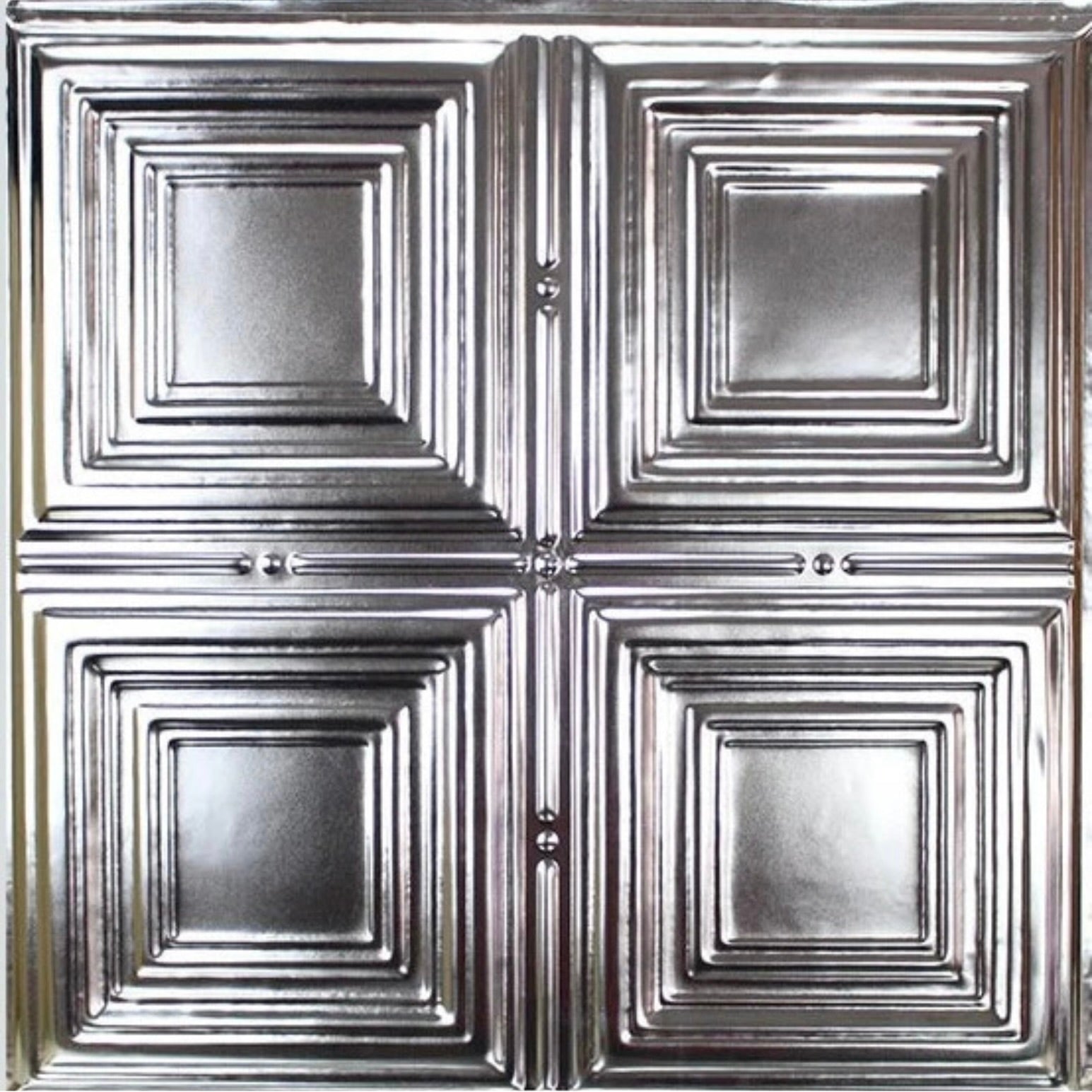<p>
When you first look at <a href="https://metalceilingexpress.com/collections/ceiling-tiles?sort_by=manual&filter.v.option.color=Unfinished">unfinished ceiling tiles</a>, they can appear ordinary—simple sheets of pressed metal or tin with embossed patterns waiting to be noticed. At a glance, they may not seem like the centerpiece of a room. Yet, with the artistry of hand-finishing, these plain surfaces are transformed into eye-catching designs that elevate entire interiors. The journey from raw material to refined detail is what sets an average ceiling apart from a truly memorable one.
</p>
<p>
This article will walk you through the before-and-after journey of unfinished tiles, highlighting how hand-applied finishes bring depth, character, and sophistication to spaces of all styles.
</p>
<h2><strong>The Beauty of a Blank Canvas</strong></h2>
<p>
<a href="https://metalceilingexpress.com/collections/ceiling-tiles?sort_by=manual&filter.v.option.color=Unfinished">Unfinished tiles</a> provide a clean starting point. They are typically made from durable metal, such as tin, and pressed into ornate or geometric designs. While the embossed detail is visible, the lack of color or finish means the pattern can get lost in the uniform sheen of raw metal.
</p>
<p>
For many homeowners and designers, unfinished tiles are a practical choice: affordable, versatile, and easy to store until needed. But they hold unrealized potential. The real magic happens when finishing techniques are applied—breathing life into the patterns and ensuring the ceiling becomes more than just overhead décor.
</p>
<h2><strong>Why Hand-Finishing Matters</strong></h2>
<p>
Machine-applied coatings are efficient, but they rarely capture the artistry and nuance that a hand-finished tile delivers. Hand-applied finishes allow for subtle shading, layered tones, and a more authentic aged or premium look. Every brushstroke, glaze, or patina creates uniqueness, meaning no two tiles are ever completely identical.
</p>
<p>
This craftsmanship turns mass-produced tiles into works of art. Much like custom furniture or hand-painted ceramics, hand-finished ceiling tiles become part of a space’s personality rather than just another building material.
</p>
<h2><strong>Techniques That Transform Unfinished Ceiling Tiles</strong></h2>
<p>
There are several <a href="https://cdn.shopify.com/s/files/1/0695/0954/6295/files/MCE_-_Finishing_Guide.pdf?v=1717443183">hand-finishing techniques</a> that designers and craftsmen use to <strong>transform unfinished ceiling tiles</strong>:
</p>
<ul>
<li><strong>Antiquing:</strong> By applying and then partially removing darker tones, artisans highlight the raised details of the pattern. This gives tiles a timeworn, vintage appeal perfect for traditional or historical interiors.<br></li>
<li><strong>Brushed Metallics:</strong> Brushing on layers of bronze, copper, or gold creates depth and shimmer. This works especially well in upscale dining rooms, lounges, or luxury retail spaces.<br></li>
<li><strong>Two-Tone Finishes:</strong> Contrasting colors are layered to accentuate the design. For example, a silver base with black glaze can make even subtle patterns stand out dramatically.<br></li>
<li><strong>Matte and Satin Washes:</strong> For a modern aesthetic, matte or satin hand-applied finishes soften the shine and create a more understated sophistication.<br></li>
</ul>
<p>
Each technique reshapes the perception of the tile, proving that detail and finish matter just as much as the base material.
</p>
<h2><strong>The Before-and-After Effect</strong></h2>
<p>
The transformation journey can best be understood by imagining a plain tile installed in a kitchen or living room ceiling. At first, the unfinished tile adds texture but doesn’t command attention. Once hand-finishing is applied, the raised floral, geometric, or Victorian pattern suddenly becomes a showpiece.
</p>
<p>
Lighting enhances this effect further. With hand-finished tiles, overhead fixtures cast shadows and highlights that emphasize depth, making the ceiling feel dynamic and rich. Guests notice the ceiling immediately—not just as a background element, but as an intentional design feature.
</p>
<h2><strong>Tailoring Finishes to Design Styles</strong></h2>
<p>
One of the great strengths of hand-finishing is its adaptability. No matter your preferred style, finishes can be tailored to fit seamlessly:
</p>
<ul>
<li><strong>Classic Elegance:</strong> Antique bronze or gold patinas add grandeur, perfect for historic homes or formal dining spaces.<br></li>
<li><strong>Industrial Chic:</strong> Matte black or brushed steel finishes pair well with exposed brick and modern loft interiors.<br></li>
<li><strong>Rustic Charm:</strong> Weathered copper or verdigris finishes create a warm, organic feel suited for cabins or farmhouse-style kitchens.<br></li>
<li><strong>Contemporary Minimalism:</strong> Subtle satin or monochrome finishes provide texture without overwhelming sleek modern spaces.<br></li>
</ul>
<p>
By starting with an unfinished tile, homeowners and designers get the freedom to choose the exact mood and character they want the ceiling to project.
</p>
<h2><strong>Hand-Finishing as an Upgrade Investment</strong></h2>
<p>
Hand-finishing isn’t just about aesthetics—it’s an investment in value. A room with thoughtfully finished ceilings instantly feels more high-end. This can boost perceived property value, especially in commercial spaces where customer impressions matter.
</p>
<p>
Restaurants, boutiques, and offices often use finished ceiling tiles to distinguish their interiors from competitors. Likewise, homeowners find that these details add a “wow factor” that elevates everyday living spaces into magazine-worthy rooms.
</p>
<h2><strong>DIY or Professional Craftsmanship?</strong></h2>
<p>
For homeowners with a creative streak, DIY finishing kits are available. With patience and the right materials, you can experiment with glazes, metallic paints, and patinas to create your own custom look.
</p>
<p>
However, professional hand-finishing ensures consistency and durability. Skilled artisans know how to layer finishes correctly, how to seal the tile, and how to achieve subtle variations without overworking the surface. If you want a uniform yet handcrafted look across an entire ceiling, hiring experts often delivers the best results.
</p>
<h2><strong>Practical Tips for Success</strong></h2>
<p>
If you’re considering transforming unfinished ceiling tiles, here are a few practical tips:
</p>
<ul>
<li><strong>Test Before Committing:</strong> Apply finishes to a sample tile first to confirm color, texture, and sheen.<br></li>
<li><strong>Consider Lighting:</strong> Finishes interact with light differently; test tiles under your actual room lighting before finalizing.<br></li>
<li><strong>Think About Longevity:</strong> Use sealants where needed to protect patinas or painted surfaces from wear.<br></li>
<li><strong>Mix and Match Carefully:</strong> While variety can be striking, too many finishes in one room may overwhelm the design. Aim for cohesion.<br></li>
</ul>
<p>
These steps ensure that the final product looks intentional and lasts for years.
</p>
<h2><strong>From Plain to Premium: A Ceiling That Tells a Story</strong></h2>
<p>
The journey of <strong>transforming unfinished ceiling tiles</strong> with hand-applied finishes is about more than aesthetics—it’s about storytelling. A ceiling once overlooked becomes a canvas of artistry. Each hand-finished tile speaks to craftsmanship, attention to detail, and the homeowner’s or designer’s commitment to creating a space that feels unique.
</p>
<p>
From plain to premium, the difference is undeniable. What starts as a blank sheet of metal ends as a masterpiece that ties the room together. Whether you opt for the warmth of antique bronze, the shimmer of brushed copper, or the modern appeal of a satin wash, hand-finishing ensures your ceiling tiles stand out as central design features, not forgotten background details.
</p>
<h2><strong>Conclusion</strong></h2>
<p>
Unfinished tiles hold potential, but hand-finishing unlocks their beauty. By carefully selecting techniques, colors, and finishes, designers and homeowners alike can create ceilings that transform entire rooms. The before-and-after difference is dramatic: a shift from functional to breathtaking, from overlooked to unforgettable.
</p>
<p>
If you’re ready to elevate your space, consider the artistry of hand-finishing. With the right approach, you can <strong>transform unfinished ceiling tiles</strong> into stunning centerpieces that make every glance upward worth it.
</p>

